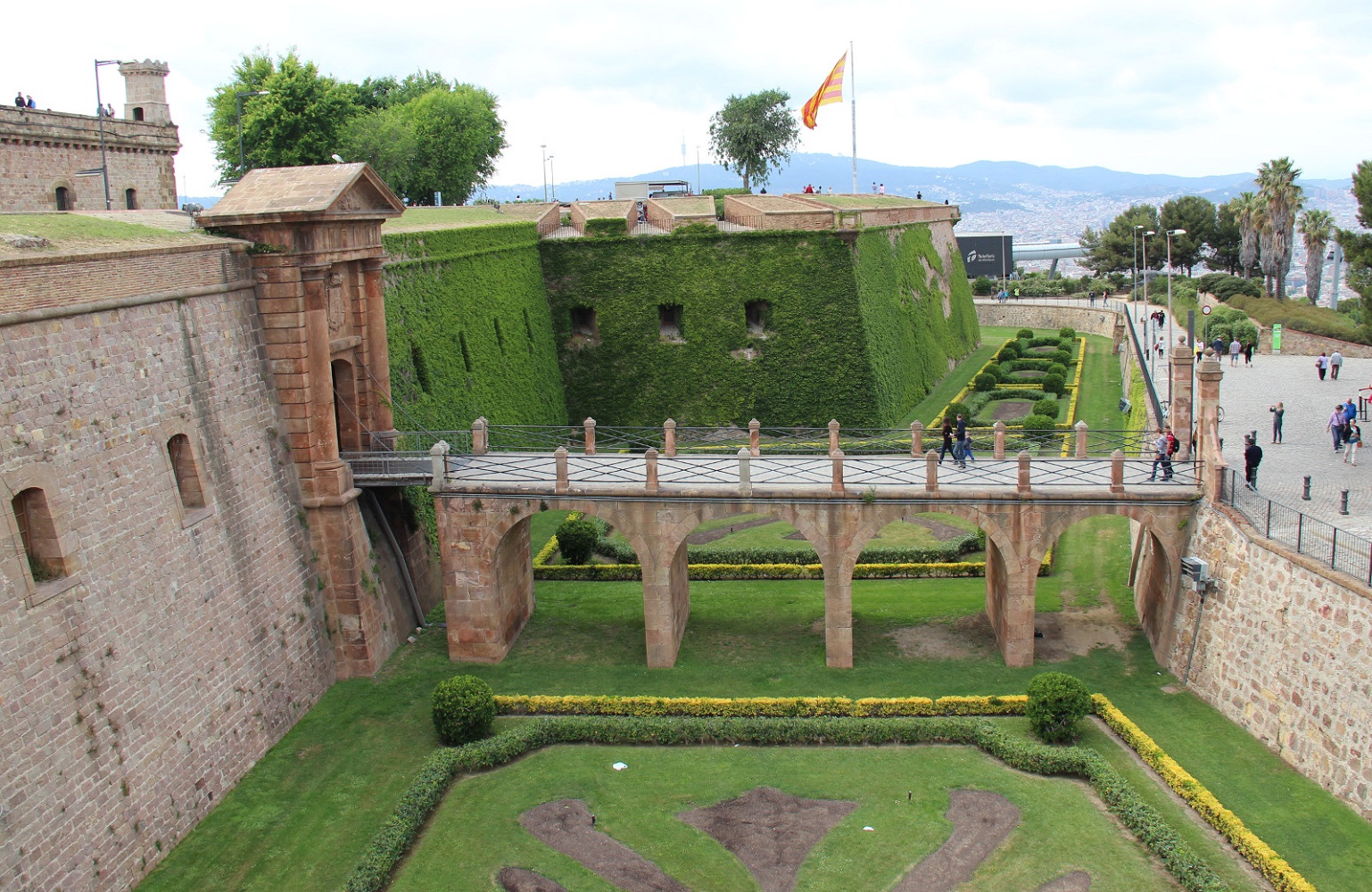Montjuïc Castle is an old military fortress, with roots dating back from 1640, currently serving as a Barcelona municipal facility, built on top of Montjuïc hill in Barcelona, Catalonia, Spain.
The foundation stone for the basic fortification was laid out in 1640. A year later, in January 1641, the fort saw its first battle, during the Catalan Revolt when the Principality of Catalonia challenged Spain's authority. On orders from the King of Spain, Pedro Fajardo, heading an army of 26,000 men, proceeded to crush the revolt. The Spanish recaptured several cities, but they were defeated at the Battle of Montjuïc by the Catalan rebels, led by Francesc de Tamarit.
Fifty years later, in 1694, new bastions and battlements were erected and the fortress became a castle.
The old fort was however demolished in 1751 by the Spanish engineer and architect Juan Martin Cermeño, creating the current structure, still standing. The final shape of the castle took form during 1779 and 1799, when major construction works took place in order to improve the castle and accommodate the needs. It was also during this time that the castle was equipped with 120 cannons.
During the Napoleonic Wars, the French Army entered Barcelona, and, on orders from Napoleon, they also captured the castle without firing a shot as the troops guarding the castle were ordered not to fight the French.
In the last 350 years Montjuïc Castle has played a decisive role in the history of Barcelona becoming a symbol of submission after the Catalan defeat to Spain in 1714. Since then the Montjuïc canons have bombarded the city and its citizens on various occasions and Montjuïc has been used as a prison and torture centre repeatedly for three centuries.
The castle is infamous in Catalan history books because of its role in the civil war from 1936 to 39 when both sides of the conflict imprisoned, tortured and shot political prisoners at Montjuïc,[citation needed] among them Lluís Companys, who was the president of the Generalitat de Catalunya while the Spanish Civil War. Companys was executed by the dictator Franco's regime at Montjuïc castle in 1940.
Later in the 20th century, the castle became a military museum. In June 1963, Francisco Franco inaugurated the Military Armor Museum, the official name given to the institution.












